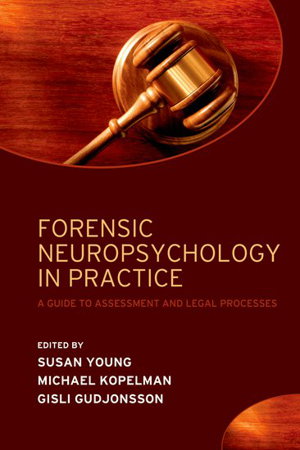
PublishedOxford University Press, June 2009 |
ISBN9780198566830 |
FormatSoftcover, 368 pages |
Dimensions23.4cm × 15.5cm × 2cm |
Clinical psychologists and psychiatrists are increasingly being asked to prepare reports for legal purposes. These might involve issues regarding the clients own mental state at the time they committed the crime, or it might involve the neuropsychological effects of an injury to a third party. In addition they might be looking at issues regarding impulsivity, and the role of underlying disorders such as ADHD, and antisocial or borderline personality disorders. These
topics are typically the preserve of the field of forensic neuropsychology, yet for many, this discipline is seen as a highly specialised one beyond the scope and skill of the clinical psychologist.
This book fills a major gap in the literature, in providing a practical reference text for clinical and forensic psychologists and psychiatrists who are working in these important areas of forensic consultancy, and who need a working knowledge of neuropsychological assessment and legal processes. Topics include: aggression and violence, learning disability and developmental disorders - such as autism and ADHD, eplilepsy, amnesia, alcohol and substance misuse, and traumatic
head injury. In addition, the book looks at expert testimony, malingering, and other ethical and professional issues. It will help practitioners deal with the clinical and neuropsychological problems
in the field, and negotiate the legal labyrinths involved in issues such as competency, fitness to plead and stand trial, mental capacity and mitigation. With chapters written by leading practitioners and clinicians that provide a synthesis of key knowledge and best practice in their areas, this thought provoking and pragmatic guide will be essential for clinical and forensic neuropsychologists, psychiatrists, and lawyers.

